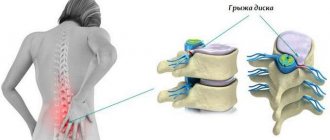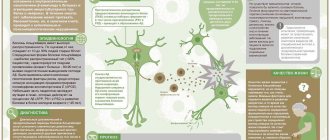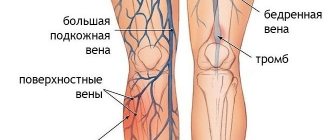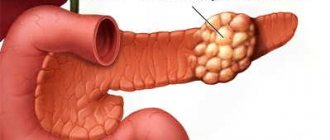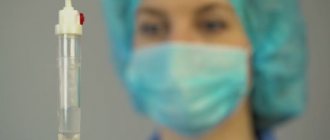Down syndrome is a chromosomal disorder in which a person has one more chromosome added to the 21st pair of chromosomes. It provokes various symptoms in people - a specific eye shape, a change in the shape of the face, etc. In the article you will learn everything about what Down syndrome is, the symptoms and treatment of the pathology, its signs and the reasons why children are born with Down syndrome.
Down syndrome
The first identification of Down syndrome as an independent nosological entity is attributed to the English researcher Langdon Down, who in the ethnographic classification of idiots of 1866 called “Mongoloid idiocy” a special group of patients who had an external resemblance to representatives of the Mongolian race. Since then, the name of this form of oligophrenia “Mongolism” has taken root in foreign medical literature. In our country, the term “Down disease” or “Down syndrome” has long been used.
Down only isolated the disease; its first scientific description was given ten years later by Down's compatriots Fraser and Mitchell.
Down syndrome occurs in all races and nationalities. Both sexes are affected approximately equally, and the number of patients accounts for up to 10% of all patients with mental retardation. The frequency of children with this syndrome among all newborns ranges from 0.1 to 0.2%, i.e., one sick child per 500-1000 newborns.
External manifestations
What do children with Down syndrome look like? Down syndrome always changes a child's appearance. Visual differences appear in the first days of his life. Gradually, some features become more distinct.
Children with this pathology are not prone to aggression. They are peaceful, good-natured and able to enjoy any events that happen.
Such factors cause excessive smiling in children.
Child with Down syndrome - photo:
External manifestations of Down syndrome:
- Mongoloid eye shape;
- flat bridge of the nose;
- fold on the lacrimal tubercle;
- various speech defects;
- wide hands;
- increased size of the occipital part of the head;
- disproportionately large facial features.
Forms of Down syndrome
Down syndrome has three different forms of chromosomal changes.
Nonjunction (simple trisomy) is the most common form, occurring in 93% of victims. In the nucleus of all the patient's cells there are three separate copies of chromosome 21. This form is not simply hereditary, since gamma cells with the normal number of chromosomes are found in the affected group. The translocation is an inherited form, present in approximately four percent of patients; but not all of them are hereditary diseases.
A form of translocation may occur because chromosome 21 has a peripheral centromere (called an acrocentric chromosome), so that two chromosomes 21 can be fused and behave like one chromosome. In addition to the hybrid chromosome 21-21, fusion with other acrocentric chromosomes such as 14 or 14 may also occur.
The translocation can be balanced, which means that the affected person has only 45 chromosomes in their karyotype, but their chromosome 21 is doubled. Such a person is then healthy and does not suffer from Down syndrome. However, all of his gametes contain a double dose of the gene on chromosome 21, and, therefore, all descendants of such a person will have Down syndrome.
Mosaic is a milder form, affecting about 3% of patients. Mosaic means that only some cells are trisomic. The quality of speech of such a patient depends, first of all, on the proportion of affected cells.
Causes
The main reason why children are born Down is improper cell division. The cause is a genomic mutation that causes Down syndrome. The process is not affected by factors such as immune activity, lifestyle, bad habits, or the general health of the parents. Disorders occur when chromosomes diverge during the process of meiosis (division of the nucleus of a eukaryotic cell), resulting in congenital anomalies and diseases.
The causes of occurrence correlate with the age of the parents - descriptions of numerous clinical cases of Down syndrome confirm this relationship. The likelihood of having a child with trisomy 21 increases as the age of the parents increases.
For example, if the age of the mother and father is 20 years old, the probability is 1 in 2000 newborns, 35 years old - 1 in 365, 40 years old - 1 in 100, over 45 years old - 1 in 19. The causes of Down syndrome are not associated with pathological processes and diseases occurring during pregnancy.
Pathological anatomy
Based on the chromosomal nature of the disease, it appears as a congenital developmental anomaly in which all organs, without exception, are built from cells with an abnormal nuclear structure. In turn, abnormal cells cannot ensure the construction of organs that are correct in all respects. This is confirmed by pathological findings.
With Down syndrome, there is inconstancy and uncertainty of changes in the central nervous system. The weight of the brain is slightly reduced; true microcephaly never occurs. Weight loss occurs primarily through the frontal lobes, brain stem, and especially the cerebellum. Thus, the most lately acquired systems (frontopontocerebellar tracts) are affected. The superior temporal gyri may also be somewhat reduced.
In the pituitary gland, it is not possible to identify secretory granules that serve as an indicator of the activity of this gland. The thyroid gland is reduced in size, part of its stroma is replaced by connective tissue. Atrophic changes are found in the adrenal cortex and gonads.
The cardiovascular system has been significantly changed. In 10-30% of cases there are congenital heart defects. Among them, defects of the interventricular and interatrial septa occupy the first place. The vessels are also changed: the aorta is narrow, all large vessels are smaller.
Fatty vacuolation, fibrosis and congestion are found in the liver, although the function of the organ is not significantly impaired.
Etiology
The main cause of the disease is genetic disorders. Trisomy 21 is responsible for the clinical manifestations of the defect.
Reasons for the formation of abnormal cells:
- Mutations of a somatic nature in the zygote or at the earliest stages of cleavage.
- Chromosome separation during mitosis.
- Redistribution in somatic cells.
- Inheritance from one of the parents of a genetic mutation.
Down syndrome is a pathology that cannot be acquired during life. In all cases, it is a genetic disease. Ethnicity or lifestyle are not precipitating factors.
However, the likelihood of having a child with the mosaic form of Down syndrome increases in the following cases:
- A woman became pregnant for the first time when she was 35 years old or older. Girls under 25 years old have healthy children in most cases.
- The father is older than average. The older the man, the higher the risk of the child developing a genetic abnormality.
- Close relatives suffered from Down syndrome. In this case, parents can be absolutely healthy.
- Close relatives are married. Incest is one of the main provoking factors, which entails genetic mutations that can have varying degrees of severity.
- The woman abused tobacco smoking and drinking alcohol while pregnant.
There is also an opinion that the development of the mosaic form of Down syndrome is associated with the age at which the grandmother of a pregnant woman gave birth to her mother. Currently, there are many diagnostic methods that make it possible to identify pathology at the earliest stage of its development, that is, in utero.
Signs of Down syndrome in children
Based on their characteristic external signs, children with this disease form a very clearly defined group. Indeed, a number of typical signs make it possible to make a diagnosis already at birth. At the same time, further careful study shows that, for all their similarities, they are surprisingly diverse.
Suffice it to say that there is not a single pathognomonic sign of the disease. But the totality of the most common symptoms still, in the vast majority of cases, quite easily determines this diagnosis.
The most typical external signs of Down syndrome are: a decrease in the size of the skull and a flat back of the head (microbrachycephaly), a slightly oblique arrangement of the orbits or eyebrows, a wide sunken bridge of the nose, a half-open mouth, and deformed ears. It is interesting to note that patients have reduced those facial features that define individuality, i.e. nose, chin, ears. This determines their external similarity, which decreases with age.
Head shape
The skull, as already noted, is microbrachycephalic. His bones grow together slowly, the fontanelles close late. The nasal and frontal sinuses are absent or severely underdeveloped. The sky is high. The lower jaw often protrudes forward (prognathism).
Teeth appear later than usual, are smaller, irregular in shape, and often have missing 3rd molars. The order of teeth eruption is incorrect.
Ears
The ears are located lower than usual, deformed, and their lobes are most often enlarged. The top curl hangs down. With age, the ears become stubby.
Leather
The skin of patients is rough, dry, wrinkled, prone to eczema. Ears and limbs can be cyanotic even in the absence of congenital heart disease. The palms and soles have deep grooves that often have a specific direction. On the palmar surface, instead of two transverse grooves, there is one. In normal people, such a groove is rare. The pattern of papillary patterns on the palms is peculiar. The most characteristic feature of DM is a high-lying additional triradius t - the place where the lines of the papillary pattern of three directions converge.
Eyes
A very typical skin formation in some of these children is the so-called epicanthus - a skin fold at the inner corner of the eye. With age, this fold gradually disappears in patients. It should be noted that a small percentage of healthy people also have epicanthus.
The mucous membranes of the eyes are prone to conjunctivitis and blepharitis. Small areas of cloudiness can often be found on the cornea. The iris of patients has a number of characteristic signs. Along its periphery, whitish patches (Brushfield spots) are visible, which are usually clearly visible with a blue iris.
Language
The tongue has deep cracks, its papillae are hypertrophied, and it is often “geographical.” The mucous membranes of children with diabetes have reduced resistance to infection: stomatitis, gingivitis, and enteritis often occur.
Weight
A newborn with Down syndrome is usually born with reduced weight, often premature. Subsequently, they lag behind in growth. The body is relatively larger than the short limbs, but its absolute length is also reduced. The hands and feet are wide.
The fingers are thick, short (“chopped”). The little finger is curved, its second bony phalanx is rudimentary. The thumb is located low. The gap between the first and second toes has been increased.
Heart disease
10-30% of patients have congenital heart defects. Other most common anomalies include: syndactyly and polydactyly, hypospadias, anal atresia, etc.
Genitals
The genital organs of patients are underdeveloped. Half of boys have testicles that are not descended into the scrotum at birth. The penis is infantile. Secondary sexual characteristics are weakly manifested. At the same time, the voice of patients is rough due to thickening of the laryngeal mucosa, which contrasts with the infantile appearance of the patients. In girls, the large lips are hypertrophied, the small lips are underdeveloped, and the clitoris is sometimes enlarged. The appearance of menstruation may be delayed, but not always. Pubic hair appears late.
Diagnostics
The diagnosis of Down syndrome is suspected based on clinical features, including the presence of developmental abnormalities and physical abnormalities. Diagnosis involves karyotypic analysis, the results of which show the number of chromosomes. During the prenatal (intrauterine) period, women at risk are shown amniocentesis, an invasive procedure during which a sample of amniotic fluid is taken.
To obtain a sample, a puncture of the amniotic membrane is performed. Prenatal diagnosis involves performing a biopsy (tissue sampling) of chorionic villi - parts of the placenta protruding in the form of flagella. The chromosomal set of chorionic villi corresponds to the number and type of fetal chromosomes.
Fetal DNA is determined using a blood test from the mother. Fetal DNA appears in the mother's blood during the first month of gestation. Extracellular DNA belonging to the fetus constitutes about 5% of the total volume of extracellular DNA circulating in the blood. They overcome the barrier of the placenta and enter the maternal bloodstream.
Fetal DNA is short sections of embryonic nucleic acids. Fetal DNA is formed as a result of apoptosis (a regulated process of cell death) of placental cells (trophoblast - the outer layer of cells). With increasing gestational age, the amount of fetal DNA increases. After the 7th week of embryonic development, extracellular DNA of the fetus is detected with 100% probability.
Suspicion of Down syndrome arises during a prenatal ultrasound examination, which is why such a diagnosis is performed on all pregnant women. Signs that indicate the presence of abnormalities in the development of the fetus include excessive transparency of the crease in the neck and other physical abnormalities. The presumptive determination of Down syndrome in the fetus is carried out through a blood test of the mother. The main evaluation criterion is the abnormal level of substances:
- Plasma protein A.
- α-fetoprotein.
- β-hCG (chorionic gonadotropin).
- Unconjugated estriol.
- Inhibin.
If there are deviations in the content of the listed substances in the blood serum, the mother is prescribed confirmatory research methods (chorionic villus sampling, amniocentesis). Newborns with signs of Downism are advised to undergo a variety of instrumental examinations due to the high probability of detecting physical abnormalities. Research methods include:
- Echocardiography (study of morphological and functional changes in the heart and valve apparatus).
- A blood test to determine the level of thyroid hormones (thyroid-stimulating hormone, thyroxine). This is done at the time of birth, at 6 and 12 months, and after a year of life - annually.
- Ophthalmological examination (ophthalmoscopy, refractometry and other methods for assessing the state of the visual system). This is done at 6 and 12 months, after a year of life - annually until the age of 5. Then the frequency of the examination is determined by the attending physician.
At birth, at 6 and 12 months of age, hearing assessments are performed annually thereafter. Regular measurements of height (using a height scale for patients with Down syndrome), weight, and head circumference are taken. Patients often have obstructive apnea, so they need assessment of the severity of the condition and adequate care. If you suspect increased mobility of the joints and instability of the spine, a consultation with an orthopedist is indicated, who, if necessary, will prescribe an X-ray examination.
Neurological problems
From birth, children with diabetes are lagging behind in the development of static and motor skills. They rarely begin to sit before one year of age, and almost never walk before two years of age.
Neurological manifestations of the disease are few. One of the constant signs is severe muscle hypotonia. The range of motion in the joints is increased. On the one hand, this may be due to the weakness of the ligamentous apparatus, on the other hand, due to the special structure of the cartilage. The patients' movements are awkward, their gait is unsteady. In a certain percentage of cases, convergent strabismus is observed.
As a rule, children have myopia and rarely sufficiently developed binocular vision. In this regard, there is convergent strabismus, sometimes spontaneous nystagmus. With diabetes, paralysis and convulsions sometimes occur. Many children have a dysfunction of the vestibular apparatus. In patients, its reaction to rotation is reduced or distorted, and vestibular chronaxia is increased.
Certain biochemical disturbances are observed, which may be due to the presence of an extra 21st chromosome. Among such disorders, first of all, disorders of tryptophan metabolism and increased sensitivity of patients to atropine should be mentioned.
The mental development of children with this disease usually rarely exceeds the degree of imbecility, and it largely depends on the child’s environment. There is a correspondence between the signs of the disease and intelligence: the more typical the features of the disease, the more significantly the intellect is affected.
In infancy, children are usually inert and lethargic. Then comes a sharp jump in their behavior. They become playful, active, and their mood is elevated. Children love to imitate, make faces, have a basic sense of tact and rhythm, love to attract attention, and are often full of affection and tenderness.
However, not all children are like this. Some of them exhibit traits of isolation and stubbornness. For others, activity turns into aggressiveness. In general, despite their physical similarity, children are surprisingly different in mental manifestations. The mental abilities of children with diabetes are characterized by a lack of ability to generalize, compare, and analyze. Patients rarely learn to write and read.
Speech is poorly developed, they pronounce words unclearly. Their active attention is unstable. Patients are oriented in space and time. With age, they become accustomed to hygiene skills. Many adults can do basic housework, but need constant guidance and supervision from others. Only in rare cases can they be completely independent.
Accompanying illnesses
Children with Down syndrome are prone to frequent illnesses of various etiologies.
Their immunity is significantly reduced by the development of pathology.
Such babies are more likely to suffer from colds, pneumonia, and bronchitis.
Infectious and viral lesions of the body are accompanied by complications and can become chronic.
Concomitant diseases may include the following pathologies:
- strabismus;
- epilepsy;
- folliculitis;
- infertility;
- hearing loss;
- obesity;
- episyndrome;
- cataract;
- eczema;
- glaucoma;
- Alzheimer's disease;
- leukemia
Treatment
Active and targeted treatment for Down syndrome cannot be carried out. Some therapeutic effect is observed when using developmental stimulation methods. Extracts from various organs of calves and aloe extract are used as stimulants.
Due to the insufficiency of a number of endocrine glands, thyroidin, a drug from the anterior lobe of the pituitary gland (prephysone), and sometimes cortin are also prescribed.
Significant place should be given to pedagogical activities. Patients can be taught the elements of reading, writing and counting, as well as basic work skills.
Drug and surgical treatment
It is important to know that it is impossible to get rid of pathology. The search for methods of treating Down syndrome is ongoing, but currently doctors focus on symptomatic therapy. Against this background, the severity of clinical manifestations decreases, due to which the quality of life of people with the syndrome significantly improves.
The treatment regimen directly depends on which internal organs are affected. Most often, the following pathologies are diagnosed in children with the mosaic form of Down syndrome soon after birth:
- Diseases of the cardiovascular system (septal defects, anomalies in the development of the atrioventricular canal, pulmonary stenosis, etc.). Based on the diagnostic results, the doctor chooses the method of surgical intervention. Prompt correction of these conditions significantly increases the chances that the child will live a long life.
- Neoplasms of a malignant nature. Most often, children with the syndrome are diagnosed with leukemia, tumors of the lungs and mammary glands, and cirrhosis. In this case, drug treatment (chemo- and radiation therapy) and surgical intervention are prescribed.
- Pathologies of the thyroid gland. Hypothyroidism is most often diagnosed in children. It is diagnosed in a third of babies with Down syndrome. Treatment consists of taking (sometimes lifelong) medications containing analogues of thyroid hormones.
- Diseases of the digestive system. As a rule, children suffer from atresia of the anus and/or duodenum. Correction of these disorders is carried out using surgical techniques.
- Visual impairment. In most cases, patients have to wear glasses throughout their lives. Severe pathologies require surgical treatment.
- Respiratory dysfunction. Frequent episodes of apnea are one of the features of the disease. Treatment of the mosaic form of Down syndrome in this case involves surgical correction of the defects. This allows you not only to get rid of breathing problems, but also to significantly facilitate the speech process.
- Disturbances in the functioning of the musculoskeletal system. As a rule, problems of this nature are solved by installing orthopedic structures. If conservative methods are ineffective, a decision is made regarding the advisability of surgical intervention.
Thus, regardless of the severity of the signs of the mosaic form of Down syndrome, treatment of the genetic abnormality is aimed only at eliminating concomitant ailments. A person with a similar diagnosis must undergo lifelong examination by an ophthalmologist, psychiatrist, gastroenterologist, pediatrician (general practitioner after 18 years of age), cardiologist, endocrinologist, etc.
Medical and pedagogical correction
This is the main area of work with special children. Treatment of the mosaic form of Down syndrome is aimed at adapting the child to the outside world. With the right approach, we train the child; he acquires all the necessary skills to interact with society.
The scheme of therapeutic and pedagogical correction consists of the following points:
- Massage. The muscle tissue of a person with the syndrome is underdeveloped, and therefore these procedures are necessary. Hydromassage has a good efficiency indicator.
- Physiotherapy. Regular exercise helps strengthen muscles and maintain them in normal tone.
- Swimming. With the help of water gymnastics, you can also strengthen muscles and significantly improve motor skills. The psychological aspect of the disease helps to relieve swimming with dolphins.
- Diet. Individuals with Down syndrome are prone to developing obesity. A nutritionist helps create a menu so that the patient does not feel deprived.
- Consultation with a speech therapist. All forms of the syndrome are characterized by speech impairment. The specialist teaches how to express one’s thoughts correctly and clearly so that a person can freely interact with society.
- Special training program. Children with the syndrome are retarded in mental development. However, with the right approach, they can be taught all the basic skills and transferred certain knowledge.
Recently, doctors are increasingly recommending hippotherapy. This is a treatment method, the essence of which is communication with horses. As a result, the child develops attention, balance, and becomes more self-confident. In addition, the baby feels protected and warm.
One important aspect is psychomotor development. Parents must understand that this is a difficult and long process, but it is always rewarded. Having mastered a new skill, kids are always very happy about it and are even more enthusiastic about learning.
The mosaic form of Down syndrome is considered the mildest. But this does not mean that the correction will be problem-free. The thinking of children with the syndrome is more inert; it is very difficult for such children to concentrate on anything, as they are restless. In this regard, parents need to approach the learning process creatively. In addition, it is necessary to take breaks more often and alternate mental activity with physical activity.
It is important to teach children to take care of themselves in everyday life. To do this, it is necessary to develop motor skills. The most effective ways:
- Clenching of fists.
- Finger drawing.
- Modeling. You can use absolutely any material (clay, dough, plasticine).
- Tearing newspaper sheets into small pieces.
- Turning book pages.
- Sorting buttons by color or size.
- Collecting puzzles.
- Creating applications that involve working with scissors.
It is important to teach your child to dress and put on his own shoes. Working with buttons, zippers and laces is also good for developing motor skills.
Regular activities with your child contribute not only to the development of physical skills. The process of communication itself stimulates both mental and psychological development.
Currently, several methods have been developed that set the direction of training. These include:
- Zaitsev's method. Allows you to teach reading and writing. The author of the technique developed special tables and cubes, as well as devices with musical accompaniment. The result is a smoothing out of intellectual problems.
- Montessori method. Its essence is to create a comfortable environment for the child in which he will have a desire to learn. In this case, the child chooses an activity for himself from several offered.
- Nikitin's technique. Implies an emphasis on hardening and physical development. At the same time, the baby should feel freedom, the atmosphere should be relaxed.
- Glen Doman method. Its essence lies in early development. In other words, it is necessary to teach a child to read, count and speak from the age of 12 months.
- Method Cecile Lupan. The main principles are independence and curiosity. All information must be presented to the child in such a way that he becomes interested. We constantly need to offer something new.
Doctors also recommend taking children to group classes. During training, kids focus on each other, and a competitive moment appears.
Prognosis for families with a sick child
A specialist can give any assumptions regarding the health of future children only based on what form of the syndrome doctors have recorded in the born child. In the case of a typical tripling of chromosome 21 (complete or mosaic) and in the absence of abnormalities in the chromosome set of the parents, the risk value will be no more than 1%.
If one of the parents has a Robertsonian translocation, then the risk of miscarriage during pregnancy will be 50%, and in those pregnancies that continue, the risk of Down syndrome in the embryo will be up to 30%. If two 21 chromosomes are involved in the Robertsonian translocation, then 100% of progressive pregnancies will have Down syndrome.
When inherited from the mother or father, a different translocation form will also slightly increase the risk of the syndrome, but doctors do not have accurate data on this problem. Assessing the probability of the occurrence of a disease is difficult, first of all, because statistical studies of this type are labor-intensive and require long-term observations.
Pregnancy screening - what to believe
Screening for Down syndrome is offered to all pregnant women, regardless of age. A range of tests are used with varying levels of accuracy. Some are carried out in the first trimester, and others in the second. These include blood tests, ultrasound scans, or ideally a combination of the two.
| First and second trimester screening | ||||
| Method | Week of pregnancy when performing | Detection speed | False positive | Description |
| Combined test | 10-13.5 weeks | 82-87% | 5% | Uses ultrasound to measure nuchal translucency in addition to blood testing for beta-hCG and PAPP-A |
| Quadruple test | 15-20 weeks | 81% | 5% | Measures maternal serum alpha-fetoprotein, unconjugated estriol, hCG and inhibin-A |
| Integrated test | 15-20 weeks | 94-96% | 5% | Is a combination of Quad, PAPP-A and NT |
| Fetal DNA | From 10 weeks | 96-100% | 0,3% | A blood sample is taken from the mother via venipuncture and sent for DNA testing. |
Screening tests help you decide whether invasive diagnostic testing is needed to find out more about your baby's condition.
They will tell you how likely it is that the baby may have the condition, but only a diagnostic test such as amniocentesis can truly confirm the concern. Screenings do not pose a risk to the mother or fetus; diagnostic tests carry a risk of miscarriage. minuses
It does not detect all cases of pathology, so it may show low risk when the condition actually exists. This is called a false negative, and causes pregnant women to refuse diagnostic testing that could identify the problem.
Conversely, screening may identify a child as being at high risk when he or she is normal (false positive). This may lead to further testing and unnecessary risks.
How to interpret the results of a screening test?
You will be given a ratio that shows the child's chances. A risk of 1 in 30 means that for every 30 women with this result, one child will have Down syndrome and 29 will not. A risk of 1 in 4,000 means that for every 4,000 women with this result, one child will have it and 3,999 will not.
The higher the second number, the lower the risk.
You may also be told that the results are “normal” or “abnormal,” depending on whether they are below or above the cutoff for that particular test.
Find out more 45 chromosomes in humans Shereshevsky Turner syndrome
Remember, a typical screening result (negative) does not guarantee that the baby has normal chromosomes, but it does suggest that a problem is unlikely.
An abnormal screening result (positive result) does not mean there is a chromosomal problem - just that it is likely to occur. In fact, most children who test positive have no problems.
Finally, keep in mind that a typical screening test result does not guarantee that a child will not have any problems. They are designed to look for several common chromosomal conditions, neural tube defects. Additionally, a normal result does not promise that there will be “normal” intelligence or brain function and does not rule out autism.
First screening
Screening for Down syndrome in the first trimester includes a blood test that measures levels of two proteins and a special ultrasound scan called nuchal translucency (NT). The first trimester blood test measures two proteins that are produced by your placenta: free beta-hCG and PAPP-A.
A woman who is at high risk for Down syndrome on the first screen has abnormal levels of these two proteins. A blood test is carried out from 9 weeks to the end of 13 weeks and diagnoses the presence of trisomy 21.
The NT test measures the clear (translucent) space in the tissue at the back of the baby's neck. Babies with chromosomal abnormalities tend to accumulate more fluid at the back of the head during the first trimester, causing the clear space to become larger.
NT can only be performed at 12 weeks of pregnancy. (Because the test requires special training and equipment, it may not be available in many small institutions.)
The benefit of first trimester screening is that you will learn about your risk of chromosomal problems early in your pregnancy. If the risk is low, normal readings will provide you with confirmation.
If the risk is high, it may be possible to consider CVS, which will allow you to find out if your baby is having problems while you are still in the first trimester.
Second screening
In the second trimester, screening involves a blood test commonly known as a multiple marker. This test is usually performed between 15 and 20 weeks of pregnancy. It measures levels of four blood substances: AFP, hCG, estriol, inhibin A.
The presence of abnormal levels is detected in about 81 percent of children with Down syndrome. Second-trimester screening is usually offered in conjunction with first-trimester screening as part of an integrated or sequential study.
Talented people of the sun
Luke Zimmerman
The actor, who has Down syndrome, starred in the ABC family series The Secret Life of the American Teenager. The role of Tom Bowman as Grace's older brother brought popularity and success. Starred in the 2013 Glee episode "Movin' Out".
Lauren Potter
Born May 10, 1990
The blonde actress with Down syndrome gained popularity on the TV show Glee, where she played Becky Jackson.
Tommy Jessop
Born January 19, 1985 UK
Star of BBC Growth Up Down's, a British documentary film. A film about three people with Down syndrome and their daily ups and downs during the production of Shakespeare's play Hamlet. The actor has been working in television since 2007, starring alongside Nicholas Hoult in Coming Down the Mountain.
Chris Burke
Born August 26, 1965
Christ Burke is a Goodwill Ambassador for the National Down Syndrome Society (NDSS). Used his celebrity status to raise awareness of Down syndrome around the world. He is known for his role as the beloved brother, Korcha of the Thahera family, in the popular TV show Life Goes On. A long career in Hollywood includes roles in the film Mona Lisa Smile, TV series such as ER, Touched by Angel.
Edward Barbanell
Born August 14, 1977
Comedian, scene stealer from comedies The Ringer, Workaholics, The New Normal. Featuring guest "Jackass 3D" Johnny Knoxville. Starred in the indie hit Dorian Blues.
Jamie Brewer
Born February 5, 1985
An actress who appeared in American Horror Story: Coven, where she plays the clairvoyant witch Nan.
A model girl with Down syndrome appeared on the catwalk at Mercedes-Benz Fashion Week, New York's high fashion week. Fights for the rights of disabled people in Texas.
Michael Johnson
Renowned artist, exhibited work at Vanderbilt University. Created more than 500 commissioned paintings. His art has been featured on the cover of the American Journal of Public Health.
Valentina Guerrero
The youngest and most popular fashion model of the fashion world in 2012. She started her career when she was less than a year old. The sweet smile went viral in a couple of days, achieving the most desired dream of any model - the cover of People magazine.
Ayelén Barreiro
Selected to participate as a dancer in one of South America's popular dance shows organized by the famous Argentine celebrity Marcelo Tinelli.
Eli Reimer
First person to reach Everest Base Camp, 2012. A full year of training with his father showed that he has physical strength, mental focus, discipline, endurance.
Judith Scott
Date of birth: May 1, 1943 – March 15, 2005.
She was a world famous American fiber sculptor. Judith was born into a middle-class family in Cincinnati, Ohio in 1943 with her twin sister, Joyce. Unlike Joyce, Judith
was born with Down syndrome.
In early childhood, the girl lost the ability to hear after contracting scarlet fever. She was sent to an Ohio state institution for about seven years, where she remained until her sister became her guardian 35 years later. In 1987, Judith was enrolled in the Center for Creative Growth in Oakland, California, which supports people with developmental disabilities.
There Judith discovered a passion and talent for abstract fiber art. Now Judith's works can be seen in museums; their prices are high, reaching tens of thousands of dollars.
Pascal Duquenne
Born on August 8, 1970 in Vilvoorde, Belgium. He is a Belgian actor. He won the Actor Award at the 1996 Cannes Film Festival for his role as Georges in The Eighth Day, starring Daniel Auteuil as Harry. Now lives in Brussels. He has Down syndrome. In 2004 he received the high rank of Commander of the Order of the Crown (Belgium).
Find out more Leigh's disease, signs in children
Raymond Hu
Artist from Alamo, California. Raymond graduated from San Ramon Valley High School, Danville, California. Since September 1996, he has been attending the high school program and taking art classes at Laney College.
Raymond has been studying Chinese brushwork with renowned San Francisco artist Lampo Leong since 1990. He developed a uniquely free, expressive painting style that received recognition. Focuses on painting animals, from lions to tigers, lizards, elephants, birds, fish.
Using photographs of animal images as models, his interpretation is completely unique. Materials: ink and watercolor applied with a round brush onto thin absorbent rice paper. Raymond's paintings have won many awards. He has a permanent exhibition at the Very Special Art Gallery, Beverly Hills, California.
Maria Langovaya
Born in 1997
Masha is an athlete, Russian world champion in swimming, lives in Barnaul. At a young age, her mother took her to the pool. Water became a natural element for the child, and thanks to hard work, Maria became a professional athlete.
Karen Gafni, 1977
Disability rights activist and the first person with Down syndrome to receive an honorary Doctorate of Humane Letters from the University of Portland on May 5, 2013, for her work raising awareness of the abilities of people who have Down Syndrome. Karen achieved amazing success in swimming. With a paralyzed left leg, she swam across the English Channel, 14 kilometers in water with a temperature of 15 degrees.
She won gold medals several times at the Paralympic Games. In addition, she founded a fund to help people with disabilities.
Madeline Stewart
Born in August 1997
Unique 20 year old model from Brisbane, Australia. Madeleine has been called by the press not only a supermodel, but also “the world’s most famous model with Down syndrome.” This incredibly courageous, beautiful, talented young woman has had amazing success, gaining media attention both in Australia and internationally.
Paula Sage
Born 1980, UK
Paula Sage's versatility is amazing. A professional netball player; a successful lawyer providing legal support to two international funds - Ann Craft and Mancap; The beautiful actress received several prestigious BAFTA awards in the category “Best Film Debut” for her role in the British film “After Life.”
Sergey Makarov
Russian Actor of the Theater of the Innocent. Received the main prize of the Kinotavr festival for the main role of Mikolka in the film “Old Women”.
Leysan Zaripova
From Tatarstan, the village of Bogatye Saby has Down syndrome.
But this did not stop him from becoming the first dance instructor in Russia, the only licensed teacher of Latin American dance Zumba in Russia.
These courageous young people, women, children lead by example, demonstrating the power of determination and faith to everyone. Ordinary people, inspiring others, who had to learn great lessons hidden behind the challenges.
Features of physical and mental development
Children suffering from downism experience retarded physical and mental development.
If you look at photos of children with Down syndrome, then with the naked eye you can notice the features of their appearance - an altered shape of the skull and facial proportions:
- a flat face on which the nose, mouth, brow ridges, etc. are faintly prominent;
- almost flat bridge of the nose;
- brachycephaly (too short skull), often accompanied by a flat occiput;
- fold of skin on the neck in newborns;
- developed epicanthus (fold of skin near the corner of the eye).
Some of these characteristics can be seen in an unborn baby on an ultrasound. However, it is impossible to accurately determine the presence of Down syndrome using ultrasound. To do this, the doctor must prescribe more serious research procedures.
There are a number of other modifications in the child’s appearance that can be classified as signs of Downism:
- Small nose.
- Short and wide neck.
- Enlarged eyes, strabismus is common.
- Shortened limbs noticeably do not correspond to the size of the body.
- Short hand length caused by underdeveloped middle fingers.
- Curved shape of the little finger.
The diagnostic signs that determine the presence of downism include the transverse palmar fold; it occurs with a frequency of 45%.
Disruption of the normal functioning of body systems also gives rise to some external features. In particular, patients often experience joint hypermobility and insufficient muscle tone. These conditions are observed in approximately 80% of cases. Due to the enlarged tongue (macroglossia) and the peculiar structure of the palate, the patient’s mouth is always slightly open. The facial muscles are unable to hold the lips closed. In 65% of cases, dental anomalies are detected.
Characteristic features of mental development
- Noticeable developmental delay. Even with timely comprehensive treatment, developmental delays will become more noticeable with age. The development of mental abilities, in most cases, remains at the level of a seven-year-old child. In rare cases, intelligence reaches a higher level.
- Small vocabulary. In addition to the fact that patients with this anomaly speak slurredly, there is a rather meager set of speech structures used.
- Lack of abstract thinking abilities. It is easier for such children to understand and analyze only what they see directly before their eyes; imagining some situation or imagining is already problematic for them.
- Low concentration. It is difficult for a child to focus on any task; they quickly begin to get distracted.
Down syndrome is practically the only chromosomal abnormality where the diagnosis can be made clinically, that is, based only on external signs. However, in any case, karyotyping will be necessary to determine the form of the syndrome.
Mechanism of occurrence of the syndrome
Down syndrome is a genetic pathology that develops in the fetus at the time of conception if a defective egg and sperm merge. In about 90% of cases, the cause is a defective egg with 24 chromosomes instead of 23, and in about 10% it may be a defective sperm. The formation of such defective germ cells can be influenced by illnesses of the mother or father, stress, bad habits, poor and irrational nutrition, everything that in one way or another can affect the division of germ cells. But the course of pregnancy and childbirth does not affect the development of Down syndrome.
A special cell protein will be to blame for the fact that germ cells contain an extra chromosome. It has the function of stretching chromosomes to the poles of the cell during division, so that as a result each cell receives equal amounts of genetic information. If the protein has a defect, then on one side the microtubule pulling the chromosome will be thin and defective, and a stronger tube from another forming cell will pull it towards itself, to the opposite pole. After this, the cells begin to separate from each other, turning into two full-fledged formations - but one will have 22 chromosomes, and the other will have 24. This defective cell can give life to a baby with Down syndrome.
Similar problems can arise when exposed to the following factors:
- consanguineous marriages with carriers of the same mutations. The closer the degree of relationship, the more likely mutations are;
- pregnancy before 18 years of age, since the body is not yet mature, and there may be defects in cell division;
- late pregnancy: after 35 years (for a woman) and after 45 years (for a man) with the accumulation of a load of mutations;
- carriage of defects in 21 pairs of chromosomes.
But for the most part, the presence of Down syndrome is the result of a spontaneous mutation for which no one is to blame.
Story
John Langdon Down
The English physician John Langdon Down was the first in 1862 to describe and characterize the syndrome, later named after him, as a form of mental disorder. The concept became widely known after he published a report on this topic in 1866. Because of the epicanthus, Down used the term Mongoloids
(the syndrome was called “
Mongolism
”). The concept of Down syndrome was very tied to racism until the 1970s.
In the twentieth century, Down syndrome became quite common. The patients were observed, but only a small part of the symptoms could be relieved. Most patients died as infants or children. With the emergence of the eugenics movement, 33 of the 48 American states and a number of other countries began programs for forced sterilization of persons with Down syndrome and comparable degrees of disability. This was also part of the T-4 killing program in Nazi Germany. Legal challenges, scientific advances, and public protests led to the cancellation of such programs in the decade after the end of World War II.
Until the mid-20th century, the causes of Down syndrome remained unknown, but the relationship between the likelihood of having a child with Down syndrome and the age of the mother was known, and it was also known that all races were susceptible to the syndrome. There was a theory that the syndrome was caused by a combination of genetic and hereditary factors. Other theories held that it was caused by injuries during childbirth.
With the discovery of technologies in the 1950s that made it possible to study the karyotype, it became possible to determine chromosome abnormalities, their number and shape. In 1959, Jérôme Lejeune discovered that Down syndrome is caused by trisomy 21.
In 1961, eighteen geneticists wrote to the editor of The Lancet that Mongolian idiocy
had "misleading connotations"
and that it was
an "embarrassing term"
and should be changed. The Lancet supports the name Down syndrome. The World Health Organization (WHO) officially removed the name "Mongolism" in 1965 after an appeal from Mongolian delegates. However, even 40 years later, the name "Mongolism" appears in leading medical textbooks, such as Pervasive and Systematic Pathologies, 4th edition (2004), edited by Professor Sir James Underwood. Advocates for the rights of patients and parents of patients welcomed the elimination of the Mongoloid label hung on their children. The first group in the United States, the Mongoloid Development Council, changed its name to the National Down Syndrome Association in 1972.
In 1975, the US National Institutes of Health held a conference to standardize nomenclature. They recommended the elimination of the possessive form:
It is required to stop using the possessive form in relation to the eponym, since the discoverer did not suffer from this disorder.
Despite this, the name "Down syndrome" is still used in all countries.
Development of children with the syndrome
Previously, children with mental retardation were considered a burden, and they tried to isolate them in every possible way. Nowadays, parents are more interested in the issue of the baby’s recovery, so such children have a better chance of a very comfortable life.
Strengths
Children with the syndrome have well-developed visual perception and are attentive to details. From the first days, it is recommended to show the baby cards with objects and name them. You need to learn 2-3 new concepts a day. Further studies will rely mostly on gestures and visual aids.
Thanks to observation, the child quickly adopts the experience of peers and adults, so a sick child should never be isolated; his talents should be supported in every possible way. Art therapy promotes normal adaptation, and athletes with such a deviation often show good results. They are especially successful in swimming, gymnastics and running.
Children with a chromosomal abnormality are empaths. They understand well the feelings of others and are always ready to provide moral support.
Physical Features
The first year of life is the most important for such children. If parents are not actively involved in the development of the baby, then the moment will be missed. In this case, it will become very difficult to develop speech and physical abilities later. In the first year, the developmental delay is minimal, it ranges from 2 to 5 months, so it is very important to start studying with the baby on time.
To strengthen muscles, it is recommended to do massage and special gymnastics. But this can only be done after 2 weeks, and only if the newborn weighs more than 2 kg. The massage course must be repeated every 1.5 months. It can be done either independently or by contacting a professional. When performing a massage at home, you should pay attention to the following nuances:
- all movements should be as light as possible, since strong pressure can lead to weakening;
- the child’s skin should not stretch or shift;
- special attention should be paid to working out the hands and forearms;
- the muscles around the mouth are worked in circular movements.
Additionally, you should lightly touch the baby’s cheeks and forehead with your fingertips. It is recommended to do this massage 15 minutes before feeding. Manual influence can be supplemented with active gymnastics. It is recommended to perform movements according to the Peter Lauteslager method or follow Voight's reflex gymnastics. Active physical exercise should be avoided.
A properly performed massage can speed up blood flow and increase the load on the heart. But before carrying out any manipulations, you should consult a specialist.
The first smile in children with this pathology may appear only at 1.5–4 months of age. She will be very weak and expressionless. It is important to notice it and respond - this way the baby will reinforce this skill. These children begin to reach out to their parents from the 6th month. Such a late appearance of the reflex is explained by muscle weakness.
It is important to teach your baby to sit as early as possible. Due to his anatomical features, he will not be able to do this without training, so parents need to be patient. His healthy peers have longer and stronger arms, so they can use them as support to sit up. Children with disabilities master this “science” only by 9-10 months. But you should understand that each baby has its own pace of development, so some babies can only sit for 24 months.
After the child begins to sit up on his own, you can give him a bottle or spoon. During this same period, children are potty trained. They begin to crawl only at 1.5 years. For a child to learn to walk, an adult must move his legs.
It is impossible to cure such a disease, but a child can learn everything that healthy children can do. This will take more time and effort, but with the right approach you will see good success.
Concomitant pathologies
Children with chromosomal pathology are characterized by a number of concomitant diseases that significantly worsen the quality of life. It is important to diagnose the disease in time and undergo treatment. Babies with the syndrome are often susceptible to infections because they have low cellular immunity. Usually the bronchi, trachea, tonsils and throat are affected. Parents should ensure that the child does not become hypothermic.
Congenital heart disease occurs in 40% of patients. It may not appear immediately, but only after a few months. If this disease causes serious circulatory problems, it is treated surgically.
Vision problems occur in 66% of children suffering from a chromosomal abnormality. They may be diagnosed with cataracts, high intraocular pressure, myopia and protrusion of the cornea. In order to notice the development of pathology in time, it is necessary to undergo a full examination by an ophthalmologist once a year.
These patients may experience food reflux. You can simply alleviate your baby’s condition by making his portions smaller.
Children with disabilities often suffer from severe stress, especially in adulthood. This leads to seizures resembling epilepsy. Their cause is focal damage to the brain, which can also manifest itself in the form of fever, hallucinations, twitching of the limbs and tilting of the head.
Some babies experience apnea - stopping breathing during sleep. This occurs due to the fact that the baby has weak pharyngeal tone and a large tongue. To reduce the manifestations of apnea, it is recommended to put the child to sleep on his side.
There are cases when children with signs of Down syndrome may have congenital blood cancer. It manifests itself in the form of hemorrhages under the skin (unreasonable bruises), in internal organs and mucous membranes. Temporary relief of the disease can be achieved with the help of chemotherapy.
Prevention
Currently, there are no measures that can prevent the occurrence of trisomy. Prevention only slightly reduces the likelihood of developing a genetic abnormality.
Doctors' recommendations:
- All identified diseases must be treated promptly. In addition, you need to adhere to the principles of a healthy lifestyle.
- It is necessary to regularly expose the body to moderate physical activity. Against the background of physical activity, blood circulation improves, which significantly reduces the risk of developing oxygen starvation of the eggs.
- It is important to constantly monitor your body weight. Obesity is one of the main causes of failure in the development and maturation of germ cells.
- It is necessary to prepare for pregnancy. You need to undergo an examination in advance and start taking vitamin complexes. It is worth remembering that the older the spouses are, the higher the risk of developing trisomy.
- Responsible prenatal testing is essential. With the help of modern methods, pathology can be detected already in the early stages of pregnancy. If pathology is confirmed, the decision remains with the parents. No doctor has the right to refer a woman for an abortion without the consent of the spouses.
In addition, it is important to know that when trisomy is confirmed, there is no need to look for the culprit. The pathology is random; not a single woman is immune from it.
Notes
- D. A. Divenni. People with Down syndrome
- Stene J., Fischer G., Stene E., Mikkelsen M., Petersen E. (1977) Paternal age effect in Down's syndrome. Annals of Human Genetics 40:299–306
- Stene J., Stene J. (1977) Statistical methods for detecting a moderate paternal age effect on the incidence of disorder when a maternal one is present. Annals of Human Genetics Lond 40:343–353
- Zatsepin I, Verger P, Robert-Gnansia E, et al. (2007). “Down syndrome time-clustering in January 1987 in Belarus: link with the Chernobyl accident?”. Reprod. Toxicol. 24
(3-4): 289–95. DOI:10.1016/j.reprotox.2007.06.003. PMID 17706919. - Website "Human Biology"
- S. Buckley, J. Bird. Meeting the educational needs of children with Down syndrome
- Green, R. M. (1997). "Parental autonomy and the obligation not to harm one's child genetically." J Law Med Ethics 25
(1):5–15. DOI:10.1111/j.1748-720X.1997.tb01389.x. PMID 11066476. - Rayner, Clare
.
ANOTHER VIEW: A duty to choose unselfishly, The Independent
(27 June 1995). Retrieved October 30, 2009. - Will, George (2005-04-01). "Eugenics By Abortion: Is perfection an entitlement?". Washington Post: A37.
- Singer Peter
Taking Life: Humans // Practical ethics. — 2nd. - Cambridge University Press, 1993. - P. 395. - ISBN 052143971X - For example, the special program Small steps
- Sex education for people with Down syndrome
- The decoding of the 21st chromosome has been completed Nature, May 9, 2000 - photos
- Down syndrome (disease) (DS)
How to diagnose
Down syndrome can be detected in a child even before birth. Technologies that make it possible to track the disease even during the mother’s pregnancy make it possible to make a decision about the future fate of the embryo. So, according to statistics, only 10–15% of women decide to leave a child with a similar disease. This is, in general, understandable, because caring for a child with such a disease requires a lot of effort - physical and moral, money, time and patience. And not everyone can do this. Today, the following studies are carried out to detect Down syndrome during pregnancy:
- Biochemical analysis of mother's blood. First, tests are performed to assess the level of β-hCG and plasma protein A. In the second trimester of pregnancy, another biochemical study is done, which monitors the level of β-hCG, AFP (a special hormone produced by the fetal liver) and free estriol. A reduced AFP level most likely indicates that the child has Down syndrome.
- Ultrasound diagnostic method. As in the case of biochemistry, you will need not one, but several studies. In the case of ultrasound, there should be at least three of them: approximately in the middle or end of each trimester of pregnancy. The first study can reveal obvious pathologies in the development of the fetus: anencephaly, cervical hygroma, etc. The thickness of the collar zone is also determined, which normally should not exceed 3 mm. The second ultrasound allows you to track the heart defect that often accompanies Down syndrome, as well as malformations of the brain or spinal cord, pathologies in the gastrointestinal tract, kidneys, and hearing organs. Such gross developmental disorders often become an indication for termination of pregnancy. An ultrasound performed in the third trimester reveals minor pathologies that can be eliminated after the birth of the child - narrowing of the urinary tract, hydrocephalus, etc.
- Amniocentesis. This diagnostic method consists of examining amniotic fluid. This study is carried out at a period of at least 18 weeks, since the volume of amniotic fluid should be quite large. It should be remembered that this analysis can cause complications such as miscarriage, infection, or rupture of the membranes. Therefore, such a study should be done only if there are no pregnancy pathologies.
Diagnosis of Down syndrome
Although all of the above studies performed during the mother's pregnancy can give a fairly accurate prognosis, none of them provides an absolute guarantee. However, the percentage of false results (both false positive and false negative) when conducting such diagnostics is small.
What to expect, forecast
The future of life for people with Down syndrome depends on social assistance and family support. Proper care and educational opportunities improve the quality of life. In Europe, between 5 and 15% of children with Down syndrome attend regular school.
Only a few complete the high school course; most don't. In America, those who have disabilities and attended high school, about 40% graduated. Many learn to read and write, some have paid jobs.
Many are able to live independently, but often need financial, medical, and legal assistance.
Improved medical care has increased life expectancy. From twelve years old in 1912, to twenty-five years old in the 1980s, to 50-60 years old in the developed world in the 2000s. Now, between four and twelve percent don't live to see one year old.
The likelihood of living a long life is determined in part by the presence of heart problems. Sixty percent with congenital heart problems live up to ten years, 50% up to thirty years. 85% of those who do not have heart problems live to be ten years old, 80% to be thirty years old. About 10% live to be seventy years old.
If you're raising a child with Down syndrome, you'll need close relationships with health care providers who understand the unique challenges of this condition. In addition to larger problems such as heart defects and leukemia, they may need protection from common infections such as colds.
Watch the video - “Sunny People”
People with Down syndrome may face a unique set of challenges, and they can also overcome these obstacles and thrive. Building a strong support network of experienced professionals, understanding family and friends is critical to the success of sun people.






